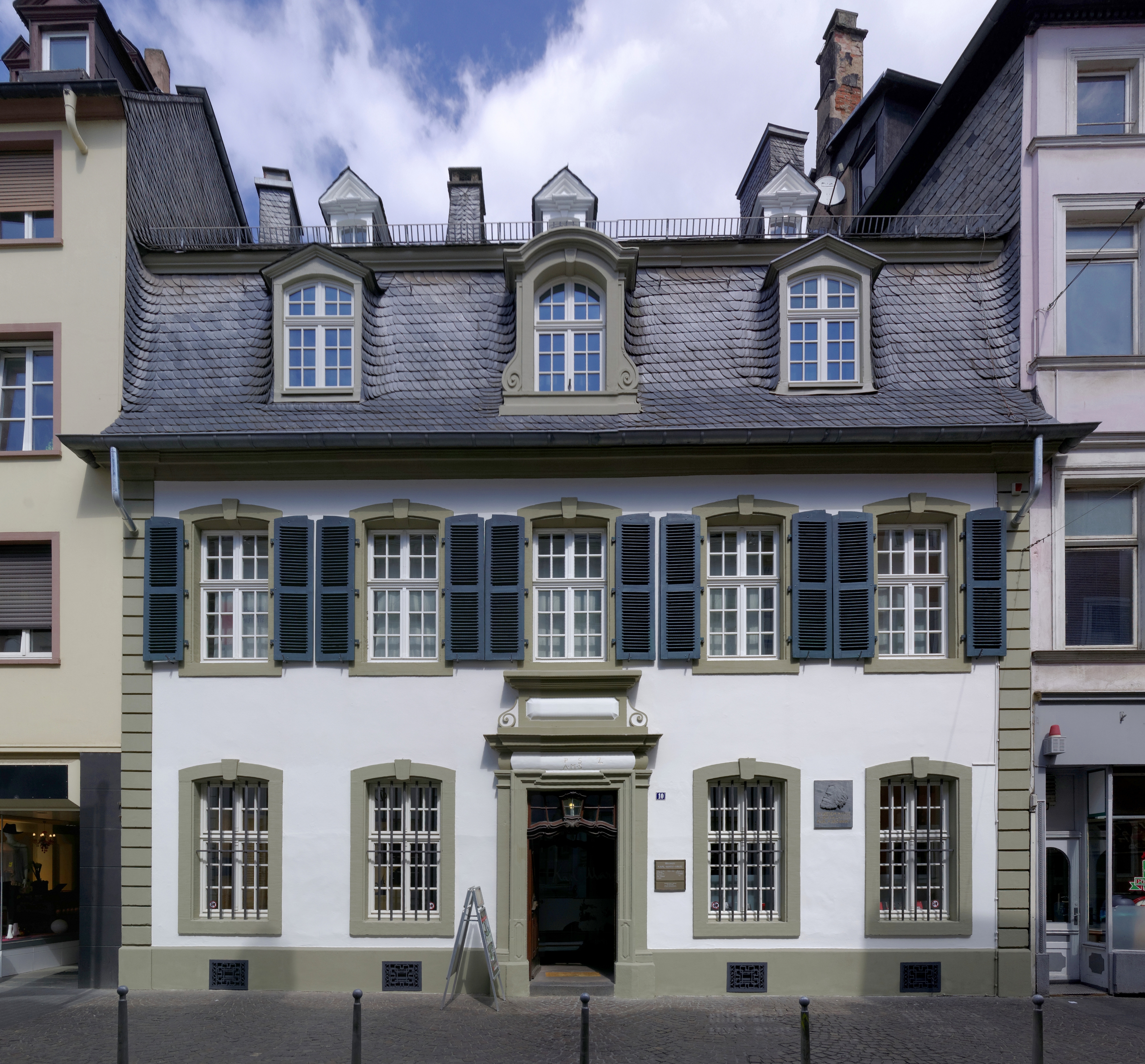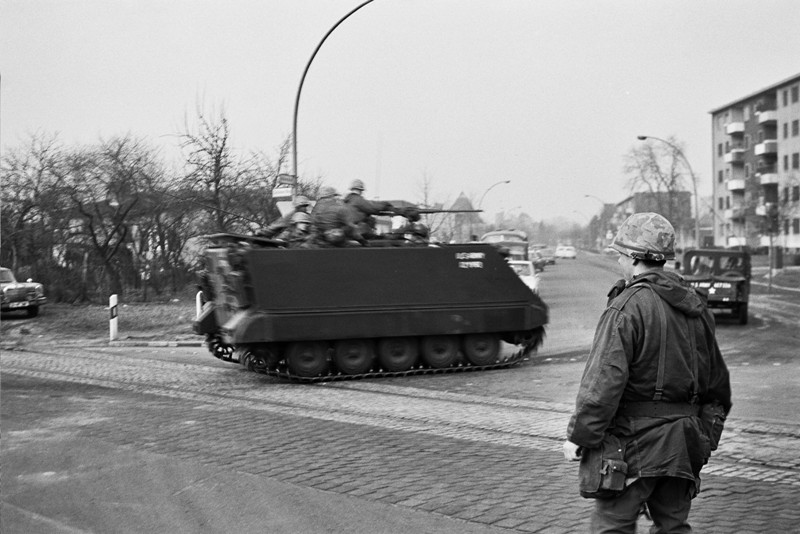|
Karl-Marx-Straße (Berlin U-Bahn)
Karl-Marx-Straße is a Berlin U-Bahn station located on the rail line. The station opened in 1926 under the name "Bergstraße," and was renamed to the current one in 1946. Although Karl Marx was a hero of the socialist republic of East Germany, the station is in former West Berlin. In 1968, the station was lengthened to 105m; due to this much of its original appearance was lost. In 1993, parts of the platform fell into the rail track and the station closed for a few days while repairs were made. The station is one stop from Neukölln station, where passengers can transfer to the S-Bahn The S-Bahn ( , ), , is a hybrid urban rail, urban–suburban rail system serving a metropolitan region predominantly in German language, German-speaking countries. Some of the larger S-Bahn systems provide service similar to rapid transit syst ....J. Meyer-Kronthaler: Berlins U-Bahnhöfe. be.bra Verlag (1996) References U7 (Berlin U-Bahn) stations Railway stations in Germany opened ... [...More Info...] [...Related Items...] OR: [Wikipedia] [Google] [Baidu] |
Berlin U-Bahn
The Berlin U-Bahn (; short for , "underground railway") is a rapid transit system in Berlin, the capital and largest city of Germany, and a major part of the city's public transport system. Together with the Berlin S-Bahn, S-Bahn, a network of suburban train lines, and a Trams in Berlin, tram network that operates mostly in the eastern parts of the city, it serves as the main means of transport in the capital. Opened in 1902, the serves List of Berlin U-Bahn stations, 175 stations spread across nine lines, with a total track length of , about 80% of which is underground. Trains run every two to five minutes during peak hours, every five minutes for the rest of the day and every ten minutes in the evening. Over the course of a year, U-Bahn trains travel , and carry over 400 million passengers. In 2017, 553.1 million passengers rode the U-Bahn. The entire system is maintained and operated by the , commonly known as the BVG. Designed to alleviate traffic flowing into and out of c ... [...More Info...] [...Related Items...] OR: [Wikipedia] [Google] [Baidu] |
List Of Berlin U-Bahn Stations
This is an alphabetical list of Berlin U-Bahn stations. Currently, there are 175 active stations. A B C D E F G H I J K L M N O P R S T U V W Y Z References {{Public transport in Berlin Berlin U-Bahn stations, Berlin-related lists, Railway stations (U-Bahn) Lists of metro stations, Berlin U-Bahn stations, List of Lists of railway stations in Germany, Berlin ... [...More Info...] [...Related Items...] OR: [Wikipedia] [Google] [Baidu] |
Karl Marx
Karl Marx (; 5 May 1818 – 14 March 1883) was a German philosopher, political theorist, economist, journalist, and revolutionary socialist. He is best-known for the 1848 pamphlet '' The Communist Manifesto'' (written with Friedrich Engels), and his three-volume (1867–1894), a critique of classical political economy which employs his theory of historical materialism in an analysis of capitalism, in the culmination of his life's work. Marx's ideas and their subsequent development, collectively known as Marxism, have had enormous influence. Born in Trier in the Kingdom of Prussia, Marx studied at the universities of Bonn and Berlin, and received a doctorate in philosophy from the University of Jena in 1841. A Young Hegelian, he was influenced by the philosophy of Georg Wilhelm Friedrich Hegel, and both critiqued and developed Hegel's ideas in works such as '' The German Ideology'' (written 1846) and the '' Grundrisse'' (written 1857–1858). While in Paris, Marx wrote ... [...More Info...] [...Related Items...] OR: [Wikipedia] [Google] [Baidu] |
East Germany
East Germany, officially known as the German Democratic Republic (GDR), was a country in Central Europe from Foundation of East Germany, its formation on 7 October 1949 until German reunification, its reunification with West Germany (FRG) on 3 October 1990. Until 1989, it was generally viewed as a communist state and described itself as a Socialist state, socialist "workers' and peasants' state". The Economy of East Germany, economy of the country was Central planning, centrally planned and government-owned corporation, state-owned. Although the GDR had to pay substantial war reparations to the Soviets, its economy became the most successful in the Eastern Bloc. Before its establishment, the country's territory was administered and occupied by Soviet forces following the Berlin Declaration (1945), Berlin Declaration abolishing German sovereignty in World War II. The Potsdam Agreement established the Soviet occupation zone in Germany, Soviet-occupied zone, bounded on the east b ... [...More Info...] [...Related Items...] OR: [Wikipedia] [Google] [Baidu] |
West Berlin
West Berlin ( or , ) was a political enclave which comprised the western part of Berlin from 1948 until 1990, during the Cold War. Although West Berlin lacked any sovereignty and was under military occupation until German reunification in 1990, the territory was claimed by the West Germany, Federal Republic of Germany (FRG or West Germany), despite being entirely surrounded by the East Germany, German Democratic Republic (GDR or East Germany). The legality of this claim was contested by the Soviet Union and other Eastern Bloc countries. However, West Berlin de facto aligned itself politically with the FRG from May 1949 and was thereafter treated as a ''de facto'' city-state of that country. After 1949, it was directly or indirectly represented in the institutions of the FRG, and most of its residents were citizens of the FRG. West Berlin was formally controlled by the Western Allies and entirely surrounded by East Berlin and East Germany. West Berlin had great symbolic signi ... [...More Info...] [...Related Items...] OR: [Wikipedia] [Google] [Baidu] |
Neukölln (Berlin U-Bahn)
Neukölln (), officially abbreviated Neuk, is one of the twelve boroughs of Berlin. It is located south-east of Berlin's center and stretches from the inner city southward to the border with Brandenburg, encompassing the eponymous quarter of Neukölln in the north, and the southern quarters of Britz, Gropiusstadt, Buckow and Rudow. The borough was constituted in 1920, when the Greater Berlin Act came into effect. After World War II, Neukölln was part of the American sector during the Allied occupation of the city, and of West Berlin from 1949 until German reunification in 1990. Since the late 1950s, it has been characterised by one of the highest shares of immigrant residents in Berlin, especially in its urbanized and industrialized northern regions. An influx of students and artists since the mid-2000s has led to gentrification. History Since the borough Neukölln is only an administrative district, its history is shaped and overshadowed by the long and varied histories of ... [...More Info...] [...Related Items...] OR: [Wikipedia] [Google] [Baidu] |
Berlin S-Bahn
The Berlin S-Bahn () is a rapid transit railway system that services the reigon in and around Berlin, the capital city of Germany. It has been in operation under the name since December 1930, having been previously called the special tariff area ('Berlin city, orbital, and suburban railways'). It complements the Berlin U-Bahn and is the link to many outer-Berlin areas, such as Berlin Brandenburg Airport. As such, the Berlin S-Bahn blends elements of a commuter rail service and a rapid transit system. In its first decades of operation, the trains were steam-drawn; even after the railway electrification system, electrification of large parts of the network, some lines remained under steam. Today, the term ''S-Bahn'' is used in Berlin only for those lines and trains with Third rail, third-rail electrical power transmission and the special Berlin S-Bahn loading gauge. The third unique technical feature of the Berlin S-Bahn, the automated mechanical train control (works very similar ... [...More Info...] [...Related Items...] OR: [Wikipedia] [Google] [Baidu] |
U7 (Berlin U-Bahn) Stations
{{Letter-NumberCombDisambig ...
U7 or U-7 may refer to: Arts, entertainment, and media * ''Ultima VII'', a computer game taking place in Brittania Science and technology * U7 small nuclear RNA, an RNA molecule * Haplogroup U7, a human mitochondrial DNA haplogroup Transportation Transport lines * U7 (Berlin U-Bahn), a subway line in Berlin, Germany * U7, the IATA call sign for Uganda Airlines, the national airline of Uganda Vehicles * Aiways U7 Ion, a Chinese electric concept minivan * German submarine ''U-7'', one of several German submarines * Luxgen U7, a Taiwanese mid-size SUV * Beijing U7, a Chinese saloon See also * 7U (other) 7U or 7-U may refer to: *7U. IATA code for Aviaenergo *Ciroën 7U *HT-7U, internal designation for Experimental Advanced Superconducting Tokamak *One of the possible sizes of a rack unit, 10.50-inches (266.70mm) nominal. See rack mount. *P2V-7U, a ... [...More Info...] [...Related Items...] OR: [Wikipedia] [Google] [Baidu] |
Railway Stations In Germany Opened In 1926
Rail transport (also known as train transport) is a means of transport using wheeled vehicles running in tracks, which usually consist of two parallel steel rails. Rail transport is one of the two primary means of land transport, next to road transport. It is used for about 8% of passenger and freight transport globally, thanks to its energy efficiency and potentially high speed.Rolling stock on rails generally encounters lower frictional resistance than rubber-tyred road vehicles, allowing rail cars to be coupled into longer trains. Power is usually provided by diesel or electric locomotives. While railway transport is capital-intensive and less flexible than road transport, it can carry heavy loads of passengers and cargo with greater energy efficiency and safety. Precursors of railways driven by human or animal power have existed since antiquity, but modern rail transport began with the invention of the steam locomotive in the United Kingdom at the beginning of the 19th c ... [...More Info...] [...Related Items...] OR: [Wikipedia] [Google] [Baidu] |




